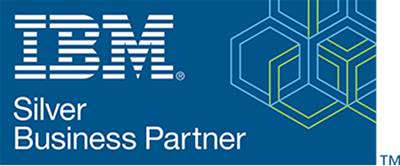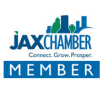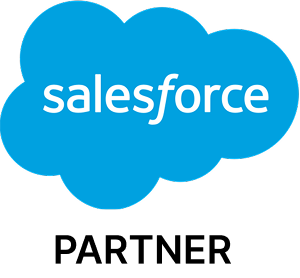Agile development is a term for iterative and incremental software development. This methodology is an alternative of the mainstream waterfall methodology. There are various agile methodologies which do share similar practices and has same goals. From implementation perspective, each agile methodology has its own set of terminologies and practices. In general, all the agile methodologies share a common vision and common values. Agile methodologies incorporate continuous iterations and feedback which helps them to refine and deliver a successful software system. It encourages a rapid response to change and advocates adaptive planning, evolutionary development, early delivery, and continuous improvement. When compared to the traditional waterfall model the agile models are light weight and adaptable. They involve continuous planning, continuous testing, and continuous integration of both, project and software. Agile models mainly focus on empowering people to collaborate and take decisions quickly and effectively.
Various Agile Methodologies
Extreme Programming (XP), Scrum, Crystal, Dynamic Systems Development Method (DSDM), Lean Development, Feature-Driven Development (FDD) are some of the popular agile methodologies. They share similar characteristics and practices.
Agile Scrum Methodology
Scrum is a light- weight agile project management framework with a broad capability to control and manage iterative and incremental projects. It is simple to implement, has proven productivity and acts as a wrapper for other practices promoted by other agile methodologies. In this type of agile methodology, the product owner works with the team closely and identifies system functionality in the form of a product backlog. The product backlog has all the details (features, bug fixes, non-functional requirements) required for successfully delivering a working software system. Based on the priorities decided by the product owner, cross functional team estimate and accept to deliver increments of the software during successive sprints. A sprint may last 30 days. Once a Product Backlog gets committed for a sprint, additional functionalities cannot be added to it except by the team. Once a Sprint gets delivered, the Product Backlog analysis and reprioritization happen if required and the next sets of functionality get selected for the next Sprint.
Lean Development
Lean software development is an agile methodology which focuses on delivering the value to the customer and on the efficiency of the mechanisms that delivers the value which is known as Value Stream. The main principle of this methodology is to eliminate waste, amplify learning, deciding as late as possible and delivering as early as possible, empowering the team and building integrity. Lean methodology selects only the truly valuable features of the system, prioritize the selected and deliver them in small batches. It focuses on the usage of team resources and ensures that everyone is productive as much of the time possible. It also recommends writing the unit test and code development at the same time.
Kanban Method
Kanban is a process designed to help the teams work together more effectively. Organizations make use of this method to manage the creation of projects with a major emphasis on continual delivery. It is mainly based on 3 basic principles
- Visualize what you do today
- Limit the amount of work in progress
- Enhance the flow
Schema
<!-- JSON-LD markup generated by Google Structured Data Markup Helper. --> <script type="application/ld+json"> { "@context" : "http://schema.org", "@type" : "Article", "name" : "Agile Development", "author" : { "@type" : "Person", "name" : "sgs" }, "image" : "https://www.sgstechnologies.net/sites/default/files/2020-01/service-b_4.jpg", "articleSection" : "Agile development is a term for iterative and incremental software development.", "articleBody" : "This methodology is an alternative of the mainstream waterfall methodology. There are various agile methodologies which do share similar practices and has same goals. From implementation perspective, each agile methodology has its own set of terminologies and practices. In general, all the agile methodologies share a common vision and common values. Agile methodologies incorporate continuous iterations and feedback which helps them to refine and deliver a successful software system. It encourages a rapid response to change and advocates adaptive planning, evolutionary development, early delivery, and continuous improvement. When compared to the traditional waterfall model the agile models are light weight and adaptable. They involve continuous planning, continuous testing, and continuous integration of both, project and software. Agile models mainly focus on empowering people to collaborate and take decisions quickly and effectively.</P>\n\n<P><STRONG>Various Agile Methodologies</STRONG></P>\n\n<P>Extreme Programming (XP), Scrum, Crystal, Dynamic Systems Development Method (DSDM), Lean Development, Feature-Driven Development (FDD) are some of the popular agile methodologies. They share similar characteristics and practices.</P>\n\n<P><STRONG>Agile Scrum Methodology</STRONG></P>\n\n<P>Scrum is a light- weight agile project management framework with a broad capability to control and manage iterative and incremental projects. It is simple to implement, has proven productivity and acts as a wrapper for other practices promoted by other agile methodologies. In this type of agile methodology, the product owner works with the team closely and identifies system functionality in the form of a product backlog. The product backlog has all the details (features, bug fixes, non-functional requirements) required for successfully delivering a working software system. Based on the priorities decided by the product owner, cross functional team estimate and accept to deliver increments of the software during successive sprints. A sprint may last 30 days. Once a Product Backlog gets committed for a sprint, additional functionalities cannot be added to it except by the team. Once a Sprint gets delivered, the Product Backlog analysis and reprioritization happen if required and the next sets of functionality get selected for the next Sprint.</P>\n\n<P><STRONG>Lean Development</STRONG></P>\n\n<P>Lean software development is an agile methodology which focuses on delivering the value to the customer and on the efficiency of the mechanisms that delivers the value which is known as Value Stream. The main principle of this methodology is to eliminate waste, amplify learning, deciding as late as possible and delivering as early as possible, empowering the team and building integrity. Lean methodology selects only the truly valuable features of the system, prioritize the selected and deliver them in small batches. It focuses on the usage of team resources and ensures that everyone is productive as much of the time possible. It also recommends writing the unit test and code development at the same time.</P>\n\n<P><STRONG>Kanban Method</STRONG></P>\n\n<P>Kanban is a process designed to help the teams work together more effectively. Organizations make use of this method to manage the creation of projects with a major emphasis on continual delivery. It is mainly based on 3 basic principles</P>\n\n<P>� Visualize what you do today</P>\n\n<P>� Limit the amount of work in progress</P>\n\n<P>� Enhance the flow</P>\n\n<P><STRONG>Extreme Programming (XP)</STRONG></P>\n\n<P>XP is a disciplined approach which aims at delivering high quality software quickly and continuously. In this method, working software gets delivered at very frequent intervals typically from 1-3 weeks. It allows high customer involvement, promotes continuous planning, testing, and close teamwork to make its target possible. Simplicity, communication, feedback, and courage are the main principles of XP approach. In this method, the customer works closely with the development team to prioritize granular units of functionality known as user stories and delivers tested software iteration-by-iteration basis. It also provides supportive, light-weight framework to guide development teams and thereby ensures high-quality software.</P>\n\n<P><STRONG>Crystal</STRONG></P>\n\n<P>The crystal methodology is one of the most lightweight adaptable agile approaches to software development. Crystal comprises of several agile methodologies like Crystal Clear, Crystal Yellow, Crystal Orange .Several factors like team size, system criticality, projects priorities determine the characteristics of this method. It aims at early frequent delivery of working software.</P>\n\n<P><STRONG>Dynamic Systems Development Method (DSDM)</STRONG></P>\n\n<P>The DSDM was mainly developed with a goal of providing industry standard framework for Rapid Applications development (RAD) approach. DSDM methodology provides a foundation for planning, managing, executing, scaling agile process and for iterative software development projects. Business needs/value, active user involvement, empowered teams, frequent delivery, integrated testing, and stakeholder collaboration are the key principles for the development of DSDM model. The MoSCoW rules which help in requirements prioritization for the DSDM are as follows:</P>\n\n<P>M - Must have requirements</P>\n\n<P>S - Should have if at all possible</P>\n\n<P>C - Could have but not critical</P>\n\n<P>W - Won't have this time, but potentially later</P>\n\n<P>The requirements are base lined earlier in the project, and all the developmental changes are reversible. Requirements get planned and delivered within short fixed time-boxes. Each of the time boxes includes both critical and less critical items so that in a case of emergency the less critical items get removed, and schedule maintenance gets accomplished. .The DSDM framework implementation with other iterative methodologies like XP is also possible.</P>\n\n<P><STRONG>Feature Driven Development (FDD)</STRONG></P>\n\n<P>The FDD is a model driven and short iteration process. The first step is to establish overall model shape. Then the iteration process continues with a two -week design by feature, build by feature.FDD designs the development process based on the below principles</P>\n\n<P>� Domain Object Modeling</P>\n\n<P>� Developing by Feature</P>\n\n<P>� Component/Class Ownership</P>\n\n<P>� Feature Teams</P>\n\n<P>� Inspections</P>\n\n<P>� Configuration Management</P>\n\n<P>� Regular Builds</P>\n\n<P>� Visibility of progress and results</P>\n\n<P>The FDD model is straightforward and suitable for large teams as well. Unlike other methods FDD describes short and specific phases of work.</P>\n\n<P><STRONG>Why Agile Development?</STRONG></P>\n\n<P>� The agile development is iterative in nature, and hence the benefits or issues with respect to the software get realized early, as the product continues to develop.</P>\n\n<P>� There is higher revenue from incremental delivery.</P>\n\n<P>� Since the testing process gets integrated throughout the life cycle, regular inspection of the product is possible, and product owner can make the necessary adjustment if any to improve the quality of the product.</P>\n\n<P>� There is active user involvement in this type of development which provides excellent visibility of both the product and the project�s progress. Hence the stakeholder�s expectations get effectively managed.</P>\n\n<P>� The issues get identified early by the development team, and hence necessary decisions making gets done at the earliest opportunity while still a material difference can be made to the outcome.</P>\n\n<P>� In agile development change acceptance gets possible and is always expected. The timescale gets fixed, and the requirements evolve as the product development is in progress.</P>\n\n<P>� The agile methodology enables a fixed budget. The scope of the product is variable than its cost.</P>\n\n<P>� The high visibility of the product and progress and the flexibility to change when needed creates better business engagement and customer satisfaction.</P>\n\n<P>� Above all other points the ability for agile development requirements to emerge and evolve and the ability to embrace change (with the appropriate trade-offs), the team build the right product.</P>\n\n<P>� The active involvement, cooperation, and collaboration make agile development teams a much more enjoyable place for most people", "url" : "https://www.sgstechnologies.net/blog/agile-development", "publisher" : { "@type" : "Organization", "name" : "SGS Technologies" } } </script>











